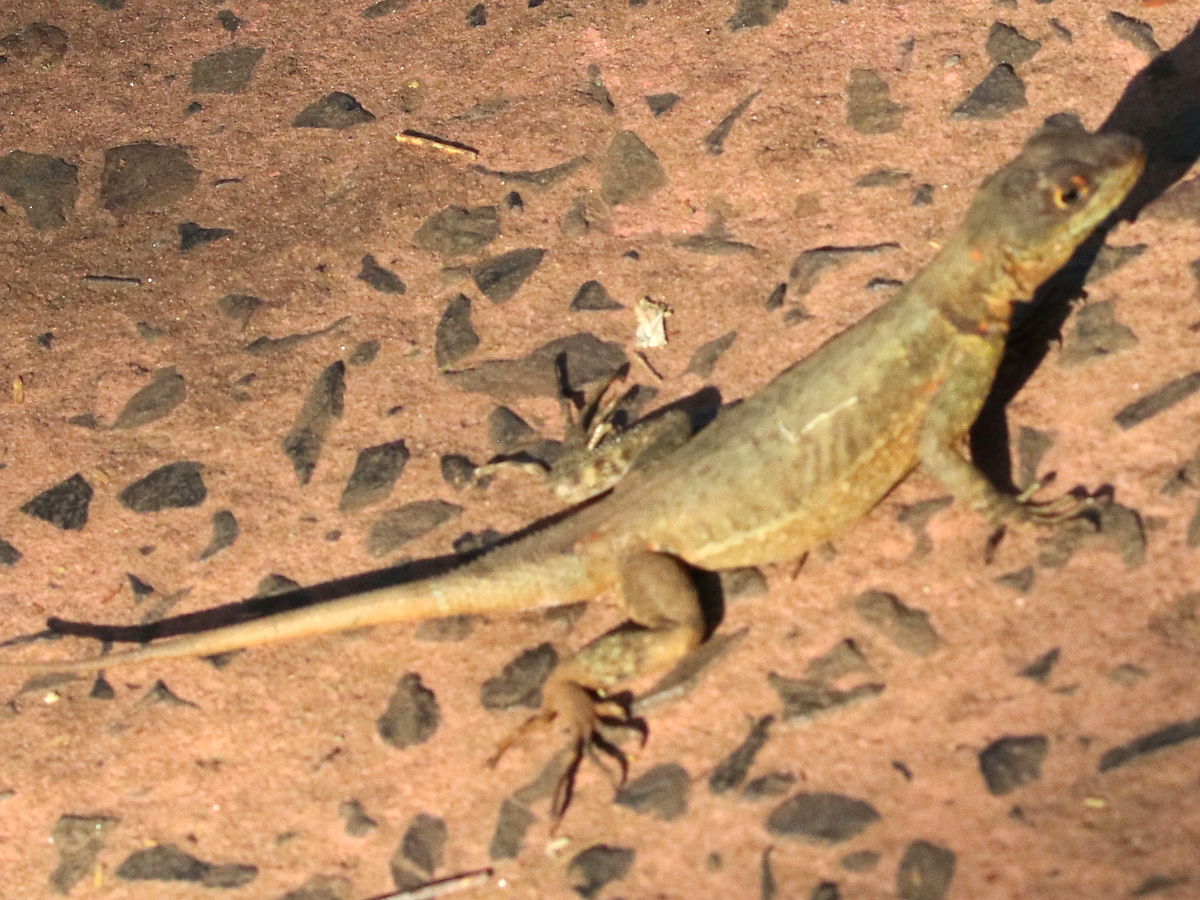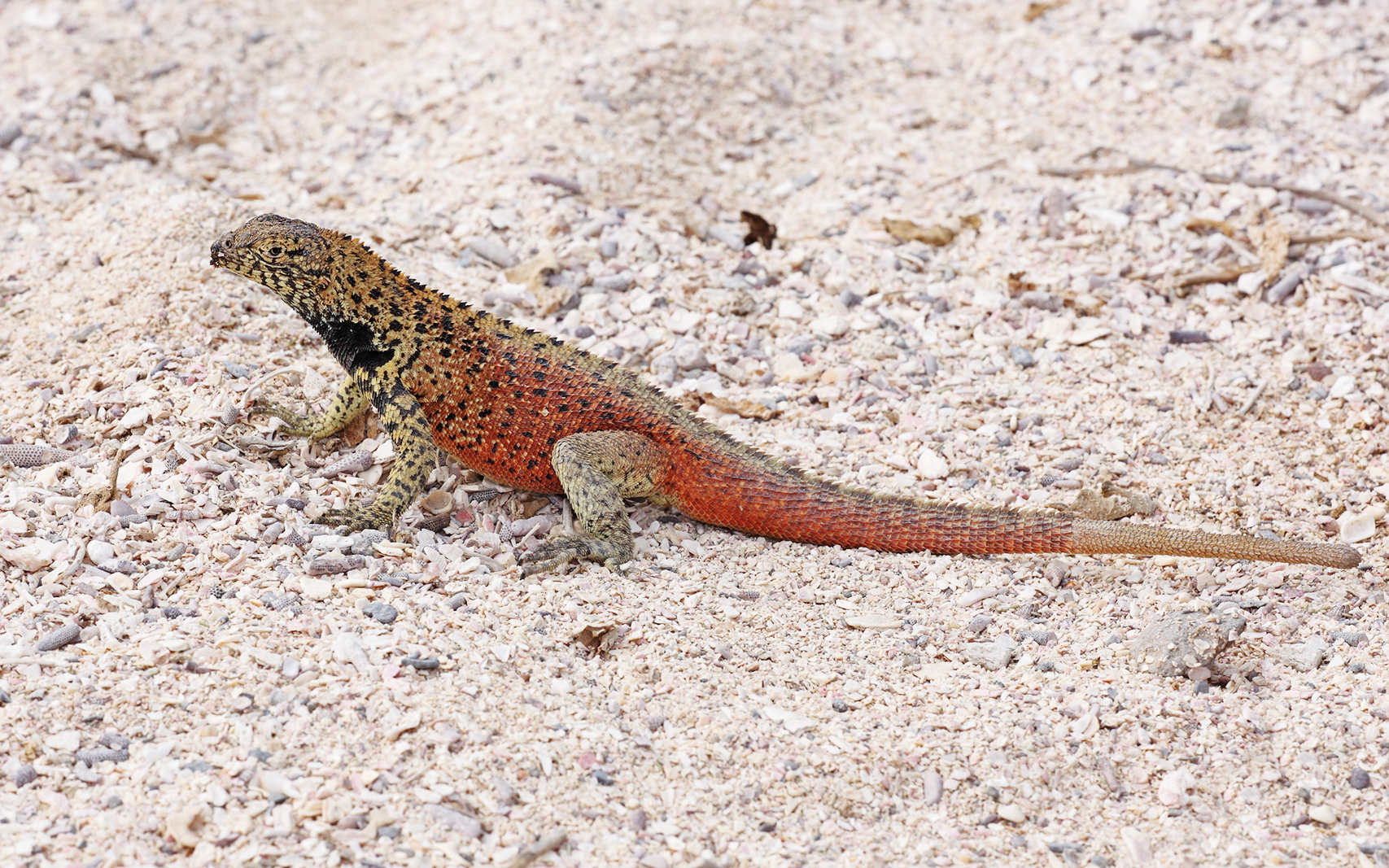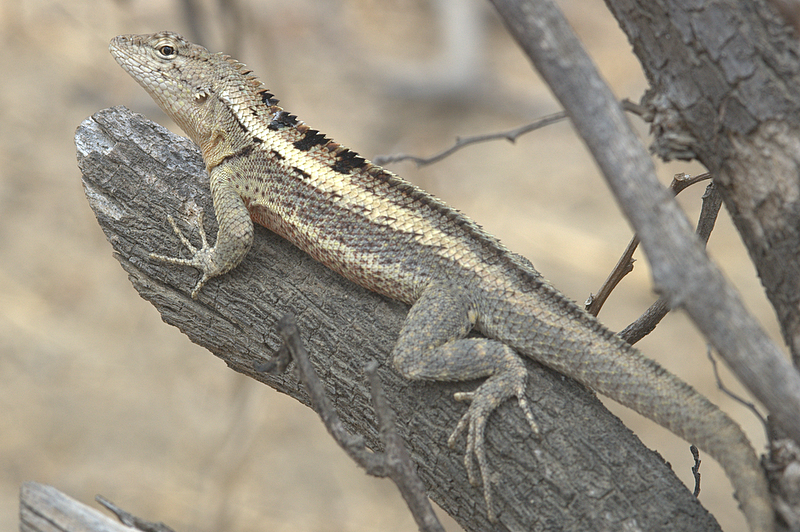|
Tropidurus
''Tropidurus'' is a genus of reptiles. The genus includes many species of Neotropical ground lizards (family (biology), family Tropiduridae). ''Tropidurus'' is the type genus of the family Tropiduridae. Geographic range and habitat Species in the genus ''Tropidurus'' are found on the South American mainland, especially in the Amazon Rainforest, but also in more arid regions. Common name No common name is widely used solely for species of the genus ''Tropidurus''. In their native range, they are simply called ''lagartixa'', as are most similar animals. If anything, the Brazilian term ''calango'' is used to particularly refer to lizards of the genus ''Tropidurus''. Taxonomy The genus ''Tropidurus'' contains 30 described species, but new ones continue to be discovered. An additional seven species—the Galápagos lava lizards endemism, endemic to the Galápagos Islands—are sometimes placed here, too, but more commonly separated in the genus ''Microlophus'', instead. Sim ... [...More Info...] [...Related Items...] OR: [Wikipedia] [Google] [Baidu] |
Tropidurus Torquatus
''Tropidurus torquatus'' is a species of lizard in the family Tropiduridae, the Neotropical ground lizards. Its common name is Amazon lava lizard. The species is endemic to South America. There are no subspecies. Etymology The specific name, ''torquatus'', is Latin meaning "adorned with a neck chain or collar". Geographic range Native to South America, ''Tropidurus torquatus'' is found in Argentina, Bolivia, Brazil, Colombia, French Guiana, Guyana, and Suriname. It is one of the most widely distributed species of the genus ''Tropidurus''. Description ''Tropidurus torquatus'' is a medium-sized lizard with a relatively large head. Its scales are overlapping. The reproductively mature female ranges from snout-to-vent length (SVL). One sample of adult males had a mean SVL of , while another found a mean SVL of . Habitat ''Tropidurus torquatus'' lives mainly in open habitat types, especially restinga, part of the Atlantic Forest biome. It may occupy disturbed and degraded resting ... [...More Info...] [...Related Items...] OR: [Wikipedia] [Google] [Baidu] |
Tropidurus Oreadicus
''Tropidurus oreadicus'' or better known in Brazil as ''calango'' is a species of lizard of the Tropiduridae family. It is endemic to Brazil and widely distributed in the biomes of Cerrado. and Caatinga. Males grow to and females to in snout–vent length (SVL). The tail is 1.2–1.8 times SVL. It is oviparous. It has a reproductive period aligning with the rainy season in the biomes of Cerrado and Caatinga, it can also be found in urban environments. Examples being Belo Horizonte, Rio de Janeiro Rio de Janeiro, or simply Rio, is the capital of the Rio de Janeiro (state), state of Rio de Janeiro. It is the List of cities in Brazil by population, second-most-populous city in Brazil (after São Paulo) and the Largest cities in the America ... and others. The juveniles are slimmer meanwhile the adults are more robust, they have a detachable tail to distract predators. References {{Taxonbar, from=Q2414670 Tropidurus Fauna of the Cerrado Lizards of Brazil Endemic reptile ... [...More Info...] [...Related Items...] OR: [Wikipedia] [Google] [Baidu] |
Tropidurus Bogerti
''Tropidurus bogerti'', the keeled lava lizard, is a species of lizard of the Tropiduridae family. It is found in Venezuela Venezuela, officially the Bolivarian Republic of Venezuela, is a country on the northern coast of South America, consisting of a continental landmass and many Federal Dependencies of Venezuela, islands and islets in the Caribbean Sea. It com .... References {{Taxonbar, from=Q936116 Tropidurus Reptiles described in 1958 Reptiles of Venezuela Endemic fauna of Venezuela Taxa named by Janis Roze ... [...More Info...] [...Related Items...] OR: [Wikipedia] [Google] [Baidu] |
Tropidurus Azurduyae
''Tropidurus azurduyae'' is a species of lizard of the Tropiduridae family. It is found in Bolivia Bolivia, officially the Plurinational State of Bolivia, is a landlocked country located in central South America. The country features diverse geography, including vast Amazonian plains, tropical lowlands, mountains, the Gran Chaco Province, w .... References Tropidurus Reptiles described in 2018 Reptiles of Bolivia Endemic fauna of Bolivia {{Tropiduridae-stub ... [...More Info...] [...Related Items...] OR: [Wikipedia] [Google] [Baidu] |
Tropiduridae
The Tropiduridae are a family of iguanid lizards."Tropiduridae". The Reptile Database. www.reptile-database.org. The family is sometimes considered a subfamily, Tropidurinae. The subfamily is native to South America, including the islands of Trinidad and the Galápagos. Commonly known as Neotropical ground lizards, most are ground-dwelling animals, and the subfamily includes some lizards adapted to relatively cold climates, including those of the Andes mountains and Tierra del Fuego. Several species give birth to live young. A 2021 study described a novel escutcheon-type generation gland ('α-gland') in tropidurines, found in at least 39 species. This gland is believed to be the main potential source of semiochemicals in this group indicating its importance in chemical signalling, an essential component of the communication system of lizards. Genera The family Tropiduridae contains the following eight genera. *'' Eurolophosaurus'' *'' Microlophus'' – lava lizards and ... [...More Info...] [...Related Items...] OR: [Wikipedia] [Google] [Baidu] |
Tropical Thornytail Iguana
''Uracentron flaviceps'', the tropical thornytail iguana or Amazon thornytail iguana is an elusive species of medium-sized arboreal lizard found in the tropical lowlands of the Amazon Rainforest. The species was described by French zoologist Alphone Guichenot in 1855.http://reptile-database.reptarium.cz/species.php?genus=Uracentron&species=flaviceps, The Reptile Database - Uracentron Flaviceps They are considered to be ant specialists and exhibit communal nesting and a harem-style breeding system in which one male mates with and attends to multiple females. Study of this species has been impeded by difficulties collecting and observing them. Taxonomy The species was originally named ''Doryphorus flaviceps'' by Guichenot in 1855. Since its original identification, the species has undergone a number of taxonomic changes. In 1881, it was renamed ''Uranocentrum flaviceps'' by O'Shaughnessy. This change did not last very long and the name was changed to ''Urocentron castor'' in 1885. O ... [...More Info...] [...Related Items...] OR: [Wikipedia] [Google] [Baidu] |
Microlophus
''Microlophus'' is a genus of tropidurid lizards native to South America. Around 20 species are recognized and 10 of these are endemic to the Galápagos Islands, where they are commonly known as lava lizards Benavides, Edgar; Baum, Rebecca; Snell, Heidi M.; Snell, Howard L.; Sites, Jack W., Jr. (2009)"Island Biogeography of Galápagos Lava Lizards (Tropiduridae: ''Microlophus''): Species Diversity and Colonization of the Archipelago". (.pdf) ''Evolution'' 63 (6): 1606–1626. (they are sometimes placed in ''Tropidurus'' instead). The remaining, which often are called Pacific iguanas, are found in the Andes and along the Pacific coasts of Chile, Peru, and Ecuador. The distribution of the lava lizards and their variations in shape, colour, and behaviour show the phenomenon of adaptive radiation so typical of the inhabitants of this archipelago. One species occurs on all the central and western islands, which were perhaps connected during periods of lower sea levels, while one sp ... [...More Info...] [...Related Items...] OR: [Wikipedia] [Google] [Baidu] |
Green Thornytail Iguana
The green thornytail iguana (''Uracentron azureum'') is an arboreal species of lizard from the Amazon rainforest and forests in the Guiana Shield. It is found in Colombia, Guyana, Suriname, French Guiana, northeastern Peru, southern Venezuela, and northern Brazil.''Uracentron azureum'' Reptile DatabaseAvila-Pires (1995). ''Lizards of Brazilian Amazonia (Reptilia: Squamata).'' Zoologische Verhandelingen 299(1): 1-706 As in '' U. flaviceps'' (the only other species in the genus), ''U. azureum'' primarily feeds on ants. [...More Info...] [...Related Items...] OR: [Wikipedia] [Google] [Baidu] |
Galápagos Lava Lizards
''Microlophus'' is a genus of tropidurid lizards native to South America. Around 20 species are recognized and 10 of these are endemic to the Galápagos Islands, where they are commonly known as lava lizards Benavides, Edgar; Baum, Rebecca; Snell, Heidi M.; Snell, Howard L.; Sites, Jack W., Jr. (2009)"Island Biogeography of Galápagos Lava Lizards (Tropiduridae: ''Microlophus''): Species Diversity and Colonization of the Archipelago". (.pdf) ''Evolution'' 63 (6): 1606–1626. (they are sometimes placed in ''Tropidurus'' instead). The remaining, which often are called Pacific iguanas, are found in the Andes and along the Pacific coasts of Chile, Peru, and Ecuador. The distribution of the lava lizards and their variations in shape, colour, and behaviour show the phenomenon of adaptive radiation so typical of the inhabitants of this archipelago. One species occurs on all the central and western islands, which were perhaps connected during periods of lower sea levels, while one sp ... [...More Info...] [...Related Items...] OR: [Wikipedia] [Google] [Baidu] |
Wied-Neuwied
Wied-Neuwied was a German statelet in northeastern Rhineland-Palatinate, Germany, located northeast of the Rhine River flanking the northern side of the city of Neuwied. Wied-Neuwied emerged from the partitioning of Wied. Its status was elevated from county to principality in 1784. It was mediatised to Nassau and Prussia in 1806. The House of Wied-Neuwied briefly ruled the Principality of Albania in 1914 through William of Albania, the younger son of Prince William. Among other notable members of the family were Prince Alexander Philip Maximilian, the second son of Prince John Frederick Alexander and a famous explorer, ethnologist and naturalist, and Princess Elisabeth, a daughter of Prince Hermann, who married King Carol I of Romania. Counts of Wied-Neuwied (1698–1784) *Frederick William, 1698–1737 * John Frederick Alexander, 1737–1784 Princes of Wied-Neuwied (1784–1806) * John Frederick Alexander, 1784–1791 *Frederick Charles, 1791–1802 *John Augustus, 18 ... [...More Info...] [...Related Items...] OR: [Wikipedia] [Google] [Baidu] |
Miguel Trefaut Rodrigues
{{Short pages monitor ... [...More Info...] [...Related Items...] OR: [Wikipedia] [Google] [Baidu] |



